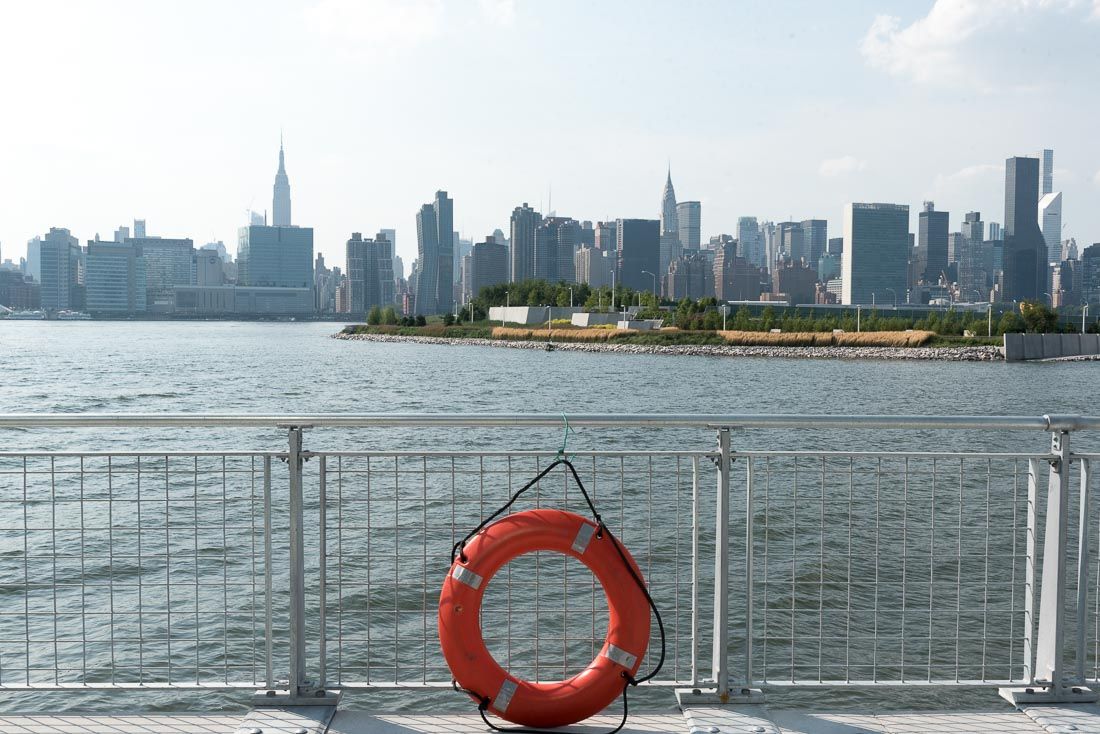City Seeks Feedback on Plan for the Future of the Waterfront


The Department of City Planning (DCP) published draft goals and strategies for a new plan to manage the city’s waterfront yesterday, and has scheduled virtual public meetings to solicit feedback.
The two meetings are scheduled for May 25th and 27th, and are designed to gather New Yorkers’ comments as DCP works to create a new Comprehensive Waterfront Plan. DCP is also accepting written comments through the plan’s website.
“The Comprehensive Waterfront Plan is a visionary roadmap, crafted together with a wide swath of New Yorkers, for making our shoreline more equitable, resilient and vibrant, whether for relaxation, recreation, resilience, travel or work,” DCP director Marisa Lago said in a statement announcing the release of the draft document.
New York City has approximately 520 miles of shoreline, 131 of which are in Brooklyn. The City’s first waterfront plan was released in 1992, following a years-long shift away from industrial uses and subsequent neglect on many parts of the waterfront, and laid out plans for the creation of new parks and greenways. A second plan was released in 2011, and identified strategies to increase the city’s resilience to climate change-driven events.
The newest draft document comes after two years of public engagement via in-person and remote workshops, waterfront tours, local events and a Waterfront Planning Camp. That engagement continued virtually during the coronavirus pandemic, a disruption that the Department says necessitated “dramatic shifts” in how it has approached the issues addressed by the plan.
“It has highlighted the importance of access to open space for public health,” the Department writes. “It has laid bare deep and longstanding inequities in our society, demonstrating how inequity can be not just insidious, but lethal. It has shown how our waterfront and city must be resilient not only to hazards such as coastal flooding, but also to crises like the pandemic.”
The new goals are organized around three “beacons” that DCP says will guide its planning process: resiliency, equity and health. From there, recommendations are split into six themes: waterfront public access; water quality and natural resources; working waterfront; economic opportunity; ferries; and climate resiliency and adaptation.
Each theme is accompanied by a wide range of policy proposals. For example, the “climate resiliency and adaptation” section includes ideas for coordinating land use decisions with the development of climate infrastructure, while the “waterfront public access” section proposes expanding opportunities for swimming and boating, along with improvements to the city’s greenways.
The plan includes several Brooklyn-focused recommendations. Among them: upgrading the South Brooklyn Marine Terminal in Sunset Park to “position NYC to become a regional hub for the assembly, installation and operation of offshore wind facilities,” and growing the Brooklyn Navy Yard as a major employment center through the implementation of a “comprehensive development plan.”
Other proposals include continued reinvestment in the reactivation of the Brooklyn Army Terminal to attract large and small manufacturers, and using industry partnerships and Workforce1 centers there and at Brooklyn Navy Yard to help connect locals with industrial jobs.
The draft plan also calls for expanded capacity and a pier extension at the Brooklyn Cruise Terminal in Red Hook to “accommodate larger, more modern classes of vessels and ease passenger flow to ground transportation,” and pushes for bike-friendly upgrades already in the works, like improvements to the Brooklyn Waterfront Greenway and a bike lane on the Brooklyn Bridge.
“The access piece is critical to realizing all those other goals,” Terri Carta, executive director of the Brooklyn Greenway Initiative, told Bklyner. “I appreciate that the draft plan thinks about these themes in an intersectional way, which is the only way to really do this. We can no longer be thinking about economic opportunity as separate from transportation, or separate from resiliency or equity.”
The final plan will be completed and released by June 30, just days after New Yorkers select the likely replacement to term-limited Mayor Bill de Blasio in the June 22nd Democratic primary.
But given the decade-long vision of the document, many groups advocating for the waterfront hope the next mayoral administration uses it as a roadmap for future action.
“The most important thing is making sure the next mayor embraces this plan and moves forward with it,” Cortney Koenig Worrall, executive director and CEO of the Waterfront Alliance told Bklyner.
The organization, which was involved in the outreach and engagement that helped shape the draft plan, has published its own waterfront and resilience platform for the city’s next mayor. It’s also organized a mayoral forum on Friday to educate voters on the candidates’ positions on climate and waterfront issues.
“It’s really important for the mayor to be committed to the waterfront,” Worrall said. “But also for the public to expect that of the mayor.”